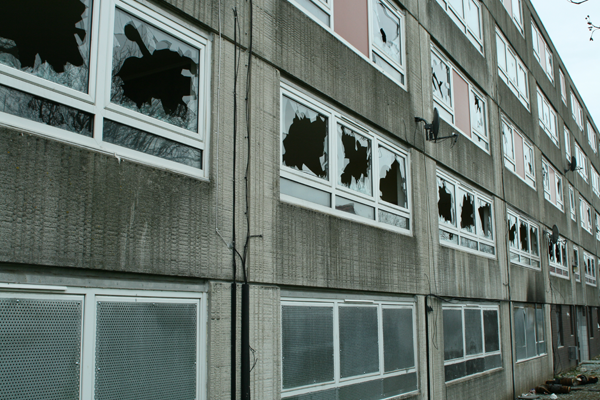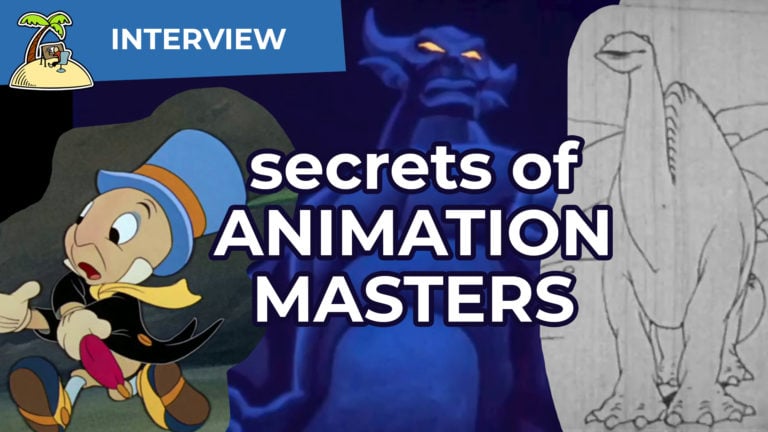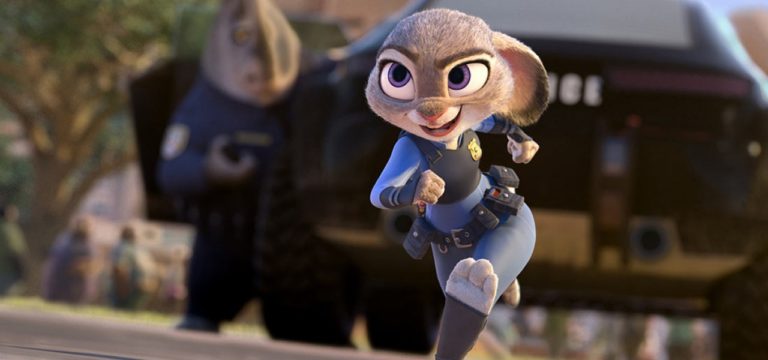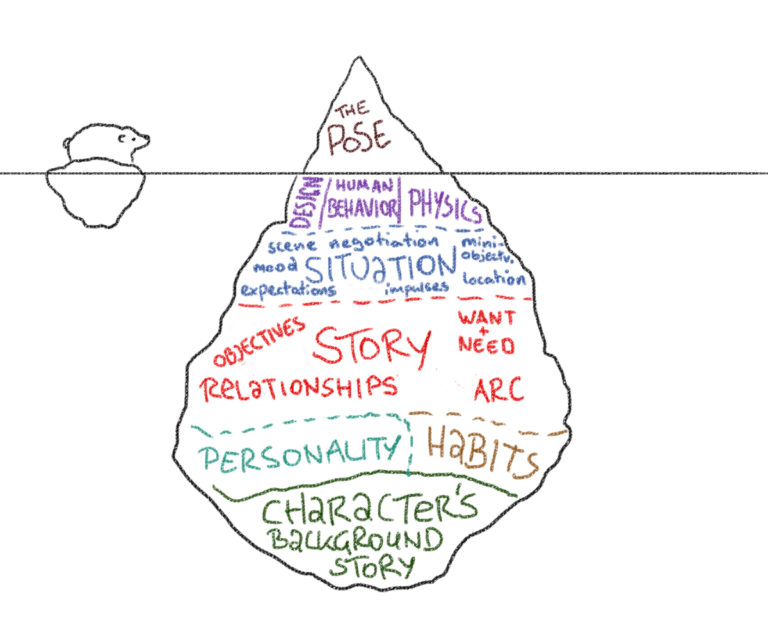The 25 Fastest Ways to Fail at Animation
Animator Island brings you weekly updates with ways to improve your animation skill. Sometimes, though, it’s just as important to know what NOT to do. Which of these easy animated mistakes are you making?
 25. Don’t plan
25. Don’t plan

Planning, such as thumbnailing and storyboarding, can sometimes be the difference between a brilliant scene and one that’s going to be redone twelve times before it even reaches “average.” It might seem like more work now, but that work now means less work later. A LOT less. So if you’re considering skipping thumbnails and going straight to an animatic or full animation, rethink it!
[Storyboard tips here]
24. Do too much too soon
We all want to get to “the fun stuff” in animation. Brilliant effects or soulful character performances. And with all the tools we have today, it can be easy to jump ahead to those things. It’s also one of the quickest ways to do lousy animation. The principals and foundations are extremely important, and though doing another bouncing ball test isn’t always exciting, it’s the base that will catch you when your complicated scenes start to fall over. You need to focus your attention on the basics before you move on to recreating the ice castle from Frozen. (This is the number one mistake beginner animators make and then kick themselves for years later.)
23. Ignore little problems early on
You can put lipstick on a pig, but it’s still a pig. In animation if you catch a pop or strobe or something that just doesn’t feel right in the early going, no amount of “lipstick” (cosmetic detail or artsy cover-up) will ever fix it. So suck it up and work it out now before you add more layers on top.
22. Figure out the camera “later”
In 3D animation we can fall into the nasty trap of putting off planning composition and camera placement until after we get started with the actual animation. The truth is, though, it should be the first thing you nail down, because all of your change of shape is based on where your camera is. You won’t be able to cheat anything “to the camera” if you don’t know where that camera will be, and cheats RARELY look good from every possible angle. Position your camera and layout first.

21. Break rules without knowing rules
In animation, breaking rules or models is par the course. It’s necessary if you’re going to get the most entertainment packed into your scene. However, much like tip 24, when you don’t have a firm grasp of the rules you’re breaking, you won’t be able to break them properly. Plus if something goes wrong, you’ll have no idea why. So learn those rules, and play by them most of the time! Then, when that magic moment comes to cheat something, you’ll understand why you need to do it.
20. Rush into the details
Details, like subtle little motions and secondary action, are what elevate good animation to great animation. It’s very easy, though, to rush to planning and animating those bits before the bulk of your work is up to snuff. If the major movement of your scene is bad, no nifty little flicks of a wrist or cascading hair curls will make it better.
19. Move everything at once
Time and again we create fantastic poses and then totally ignore how things move from one to the next. Golden Poses are worth a huge portion of your time when planning, but just as much effort needs to go towards how you get from pose to poseWhen animating pose to pose, the animator defines the most important poses first (e.g. key poses), then the second most ... More. If everything is moving at the exact same time, it’s going to bore your audience to tears and feel lifeless on screen.
[More on Saving Actions]
18. Make one shot shine while another falls flat
The old adage goes something like “You’re only as good as your last scene.” At the same time, your last scene or shot, fresh in the mind of the audience, influences how the viewer receives the next thing on screen. If you spend three weeks making one shot sparkle, but the next is a rushed mess, the lousy shot will dragLoose, attached parts tend to start moving with a delay and lag behind because of inertia. This is clearly visible at th... More down the brilliance of the great one, not the other way around. Better for you to put effort into both, even if the first doesn’t quite reach the heights it might if you dedicated all your time just to it alone.
17. Toss in that one mistake at the end
As a follow up to #18, if you create a demo reel and the majority of it is fantastic, but one little shot is not nearly as good, that one shot is going to bring everything crashing down. Better to cut it out and have a shorter reel than include it and ruin your chances of that dream job you’re after.
[More Demo Reel tips here!]
16. Forget the Why
You’ve planned out your scene, down to the tiniest detail, and are ready to start animating. Unfortunately it’s easy to forget that just because YOU have already spent a long time in the moment that you’re animating, it’s totally new to the character! Don’t forget to remember why the character is acting the way you planned them to act, or it will be obvious the figure is just going through empty motions instead of living.
15. Hold too many parts
When we move, even if it’s something as subtle as typing on a keyboard, muscles are twitching and nerves are firing all over our bodies. We made tiny, subtle shifts to our balance and even just breathing will alter everything from our shoulders to our nostrils. When you’re moving a character’s arm, it can be tempting to JUST move his arm, but better is to make those small adjustments in every part of him so he doesn’t’ appear like a statue that happens to have one moving limb.
14. Don’t take breaks
When deadlines loom the last thing you want to do is stop working furiously towards your goal. Studies have shown, though, that routine breaks allow the mind (and body- animating is hard on the eyes and wrists!) to reset and work more productively. So take some time to relax and THEN get back to it!
[Relaxing for Animators]

13. Over complicate things because “it would look cool”
Your job as an animator is to present things as clearly as possible for the audience, so nothing gets in the way of their entertainment. It might look very visually interesting to have a fancy camera move while your character is dashing down a hallway towards impending doom, but if it loses the audience, the shot will be a failure. Keep it simple, keep it clear. It will still look cool.
12. Get proud
It’s great to feel you did your best. When you step back from an animation you crafted and grin with pleasure, that’s a good day. Watch out, though. A few strings of moderate successes can elevate your pride levels and before you know what’s happening you will think you “don’t need to learn that” or “already know enough.” Always keep improving, and always be aware of how much you DON’T know. Keep going forward, don’t look at things as if they’re beneath you.
11. Cast off suggestions
Hand in hand with #12, it is very, very compelling to coddle our animations like they are our babies. Then when someone brings up constructive criticism, we get extremely defensive and rush to protect our children at all costs. The thing is, that person on the other side might be right. There may be a problem you overlooked because you’re so invested. So take a deep breath, step back, and try to look at it objectively to see if maybe it COULD use that change in camera angle or yes, it MIGHT be a little too cliché.
[Animator Q&A for suggestions]
10. Hit your beats late
If there is a definite accent to your audio (emphasis on a syllable of dialog, or sound effect that brings a lot of energy to the shot) the worst thing you can do is hit it late. So if you are going to err, err on the side of “one frame early” rather than “one frame late.”
You can see the full reasoning for this, along with the science behind it, in this video on Sound in Animation!
9. Move during an emotion change
If a character’s emotion is changing, you want that change to take center stage with the spotlight brightly shining on that moment. During those times, keep the character in one pose without a lot of other movement, at least for the split second the change in expression and attitude takes place. Then you can move to the next pose based on that change of emotion. Don’t change the emotion DURING the move to the next emotional pose.
8. Don’t give your audience time to absorb
It takes 4-6 frames of screen time before the average person can absorb something that is happening. If there’s a camera cut and an action takes place immediately, it will feel jarring. Instead work in a pose or pause to “set up the shot.” It will allow the viewer to make a mental note of what exists on screen before your brilliant performance begins.
7. Twin all over the place
Twinning will always sneak into your work, no matter how hard you try to keep it out. It may not be something obvious, either. Small details like the eyebrows being mirrored but identical just tend to happen without even thinking. Remember that paired parts, including eyebrows, can collectively work together to tell a story even if they’re doing very different things.
[More Twinning talk here]
6. Put lip-sync first
When a character is speaking, sometimes the part that’s moving the most on the entire body is the mouth. So it can be reasonable to assume most of your attention should go to the mouth. Not so! It’s amazing what you can get away with regarding lip-sync! What’s more important are the poses to enforce the emotion that’s coming out of the character’s mouth. Then, when that’s clicking, you can focus on the shapes of the lips.
5. Animate evenly
If everything is animated with the same timing, and the same pattern, and the same spacingSpacing is the distance an element travels between two frames of an animation. By increasing and decreasing the spacings... More, things will become very dull very quickly. There are exceptions to this, of course (animating to the constant rhythm of a music video, perhaps) but for the most part you want to vary your movements to couple fast and slow, big and small, and any contrast you can manage. Much like a good piece of music has soft parts AND loud bits, your animation should offer a variety for the audience to enjoy.
4. Leave no time to think
You know what’s going to happen next. You planned out your scene, and you’ve listened to the audio you’re animating 10,000 times. Because you know, you can rush a reaction or movement before the character would naturally react or move. This is especially true of dialog. Characters need time to process what the other is saying before they react. It can only take a few subtle frames, but it NEEDS to be there. Otherwise the performance will seem inauthentic and forced.
3. Ignore everything off screen
Especially true in 3D animation, it can be easy to forget there’s a ground down below if you’re animating a close up of the characer’s face. But that ground, and the laws of gravity, still apply. So if she shifts her weight while speaking, be sure it makes sense all the way down to her toes, or it won’t look balanced.
2. Be a slave to reference
Reference is great. Animating your reference is a terrible, horrible thing to do. By definition, reference is only there to be REFERRED to. It is not there to copy. Pull from it. Observe it. Jot down a few notes if you’d like. Then create a performance using that information, don’t simply translate your reference directly to the character.
1. Don’t explore
When you reach a certain level of comfort with animating, you can fall into a comfortable little rut and rely on little tricks and poses that you know work. The danger here is that you stop experimenting, and by doing so you stop growing as an artist. Even if people are knocking down your door to hire you for your particular “style” don’t be content to rest on your laurels. The best animators keep reaching beyond what they already know and pushing themselves higher and higher.
[Challenge Yourself!]
What do you think? Any of those mistakes ring true for you personally? Any others that immediately spring to mind that you think we missed? Leave a comment below and tell us, we’d love to hear about your own animation journey.







Great list! Not sure how to phrase it as a way to fail, but one of the best tips I have heard was to copy and steal techniques from other animators that do great work. An animator is not going to reinvent the wheel. If another animator’s work looks amazing, they have a good handle on the principals of animation and it would serve you well to figure out what they did and add it to your box of tricks.
Good tip! Let’s see… how could it be phrased on the flip side… Maybe “Don’t study great animators?”
Or “Ignore the best the pros have done.” 🙂
Now this is the kind of article I like to see. Short to the point, with a lot of great tips. The only way it could be better is if it has some actual animation to show what to do and not do. I know that takes a lot of work tho and you guys update every week. Thanks for the list!
xoxoxo
Yeah, I would love to do animations to go with all these tips, but like you said it’s a matter of time! Hopefully we can do more with animated examples in the future, though. I know folks enjoy those.
Errrr I do a lot of those O.O
This is an excellent list!
I don’t work with Audio or Motion, and Time is a funny thing in comics, but many of these points still apply.
It’s good to be reminded of what not to do in my work at the drafting board.
The one I found early on to be of critical importance was to remember that just because YOU know the story and dialogue, your audience does not, and so space for reactions, both from the audience and among the characters must be created in the work.
Also, don’t copy/paste characters unless they really, truly are not moving at all between panels. It’s cheap.
Cheers, and thanks for sharing!
The copy/paste thing is also extremely essential in animation! So many times (especially in 3D) we can just borrow the pose we just used and it immediately takes all the life out of the scene. Keys should all be different, they’re the storytelling parts!
Woah this is an impressive list!
I would like to know how many times in all my lifetime I make these same mistakes! Many times.
I like #8 the best ha ha
I need to staple this list to my FACE. 😛
Others that I would add:
-Make your demo reel too long
-Keep your blocking stiff and lifeless
-Have an idea and then only do that one idea
-Have the character point at everything while he is talking about that thing
Those are good ones too! Indicating (such as pointing at things) is indeed a tricky thing that creeps into our work so much.
Good tips thnx
Wish I had this list BEFORE I started the new scene I just started! XD
.There should be one of all of these that is the most important, which do you think?
If only it would be that easy… 😀 I think it all depends on what your animation requires and what level of perfection you want to reach in which fields. I would say that good animators would want to avoid all of them, because making mistakes either means a worse performance (if you just leave the mistakes in) or a lot more work than you have to do in order to correct them.
But if I had to pick I must say that planning beforehand, as well as developing and trusting your gut feeling are vital when you really go professional. If you thought about and planned what you are doing, you will automatically avoid a lot of the handcraft mistakes, you will have explored your options sufficiently and have picked the best one (which hopefully also is the most skillful choice). On top of that spotting problems while planning is much better than realizing that your shot is not working when you are half done with it.
I also have done many of those things! UH OH. Time to stop! 😛
Very good hints,actually a moral and academic lesson. Will pass this on to my students.
In my opinion, this is a very muddled list. Story telling, screen writing, acting , staging drawing skills all in the same pot. No single person is capable in mastering all of these. Good tips though.
Well, actually I think it’s really necessary for an animator to master as much of those fields as possible. It’s a big mistake to think that animation is just the handcraft of animation… it should actually be on the list too. If you don’t know about acting your performance will not be believable; if you don’t know about storytelling, you might deliver a performance that doesn’t fit the whole story arc; practicing drawing and staging will improve your poses significantly. Therefor you can’t and shouldn’t think of animation as just animation alone. Every field that has remotely to do with film-making and art skills constantly influences all of your decisions and choices of how to move the character.
Yeah I use pretty much all of those every single day. Animators have to be jacks of all trades.
Who could be so good to not do everything on here? Not me! 😛
Great list and so true.
YOU MISSED THE BEST ONE OF ALL:
The fastest way to fail at animation is to not do animation!
Ah! How could I have not thought of that one! Great call, absolutely accurate there. You have to just sit down and DO it. 🙂
Ahaa, its nice to see the huge mistakes so many young animators make when starting out. The pros certainly don’t have so many issues. I haven’t done most of these things since my first year of college.
I am extremely impressed. Good list.
This applies to a lot of creative mediums.
Thanks
Wow!!!
I’ve been teaching 2D classical for 24 years full time (part-time industry guy) and this list sums up all my nagging points. Thanks for putting it all together. One point that doesn’t seem to be on this list: giving changes in direction appropriate timing or “hangtime”. Or in the negative: When things change direction, keep the pacing constant. Or maybe: Ignore gravity.
Great call, Don. Gravity and hangtime are aspects that just can’t be avoided if you want animation that feels right. Without them, no great acting or flowing movement looks quite like it should.
This one was very helpful and I like how it keeps things short and to the point. Keep up the great work!
-clayton
I think we all know this, but certainly don’t follow all the time. So my question is what is the practical solution for being aware of all this point one by one and plan from scratch to bottom for every shot in details? Where to use what,why and how?
As soon as I saw this article it became my favorite! So many great tips in one place!
I have no idea what you said lol
Social Media is an amazing thing. I found this that way.
Loved the content .It was very different from the rest. Thank you sharing the information.
It would help us a lot 🙂
Great animations